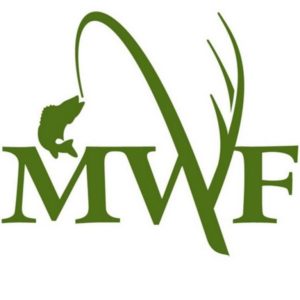The Manitoba Wildlife Federation has circulated a press release today (Monday, October 22, 2018) calling on the Government to implement sustainable fishery policies:
“NEWS RELEASE
For immediate release
GROUPS CALL ON GOVERNMENT TO IMPLEMENT SUSTAINABLE FISHERY POLICIES FOR LAKE WINNIPEG – RELEASE REPORT ON ECONOMIC IMPACT OF WALLEYE ANGLING ON LAKE WINNIPEG
WINNIPEG, MB: The Manitoba Wildlife Federation (MWF), along with several other angling and fishery advocacy groups and concerned citizens, are sounding the alarm over decades of mismanagement of the Lake Winnipeg fishery and the resultant collapse and near extirpation of species from this great lake.
“The issue of declining fish stocks in Lake Winnipeg is a direct result of commercial fishing policies that are not based on science,” said Dr. Brian Kotak, Managing Director of the MWF. “The harvest levels are unsustainable.“
Commercial fishers can catch up to a maximum quota of any of the three main species – walleye, sauger and lake whitefish. For many decades, this has meant targeting walleye, due to market prices. The system encourages intense fishing pressure on the most valuable species. “The current government inherited a mess and change is necessary,” said Kotak.
“The commercial catches of walleye from 2000 to 2010 reached record levels of over 5 million kg but were based on a house of cards – one strong year class in 2001 – which could not last,” said Dr. Scott Forbes, an ecologist at the University of Winnipeg. “Once the 2001 walleye had aged out of the fishery, catches began to decline sharply starting in 2012 and have fallen to under 3 million kg today.” A far greater decline has been masked by commercial fishers targeting small, immature walleye that now make up half of the walleye catch.
The industry responded to declining catches by changing mesh sizes. Larger mesh resulted in a predictable result – catches of big walleye, followed by an 85% decline of these large and jumbo walleye since 2012. Medium-sized walleye also declined by about two-thirds over the same time period.
“We also should be very concerned about the big decline of spawners in the lake,” said Dr. Forbes. “About two-thirds of those medium-sized walleye that are still being harvested, have not had a chance to spawn even once. Worse still is the harvest of baby walleye in small-mesh nets typically used to catch perch. Lake Winnipeg has lost most of its spawning walleye – the medium, large and jumbo-sized fish, and we are now propping up the fishery by taking baby walleye.”
In 2017, three-quarters of the fish harvested were immature. This practice is unsustainable and places the future of the fishery in grave peril. The future for sauger, which for many years made up a significant percentage of the commercial harvest, is even more bleak. The sauger catch has declined more than 96% from its peak in the first half of the 20th century and today faces possible extirpation from the lake.
Anglers have noticed the changes too. “Anglers still catch some large walleye on Lake Winnipeg but they are fewer and far between,” says Don Lamont, one of Manitoba’s most noted anglers. “Sauger have really taken it on the chin as well. The number of Master Angler size sauger has plummeted over the last two decades. In fact, there were no Master Angler sauger registered in 2017 and only two in 2016 from the Red River,” added Lamont.
The current state of the fishery on Lake Winnipeg does not bode well for the jobs that rely on it, nor the provincial economy. The MWF and its partners recently commissioned a study, conducted by Probe Research, on the economic impact of the recreational fishery for walleye on Lake Winnipeg. The results are striking. Over the last two years, there was $221 million in direct spending by anglers, adding $102 million to the province’s GDP, $44 million in wages, supporting more than 1,500 person-years (jobs) of employment, and contributing $52 million in taxes. That’s for one species and one lake. In comparison, the commercial fishing industry on Lake Winnipeg contributed $29 million to the GDP over two years, $20 million in wages and supported 696 person-years of employment, figures that reflect the economic impact of harvest of all three fish species removed from the lake. The economic numbers for angling are primarily related to walleye with a large number of these fish being released by anglers to continue to live and spawn.
“The economic impact of both the commercial industry and recreational anglers can’t be ignored,” states Kotak. “Both are valuable contributors to the economy, jobs and livelihoods and our shared heritage.” The MWF and its partners insist that without a sustainable fish resource the province stands to lose a lot. “It needs to be about supporting families in commercial fishing as well as supporting tourism and angling opportunities,” added Kotak.
Most importantly, it has to mean managing the fishery sustainably and putting the needs of the fish first. Forbes agrees, also noting that things can be turned around if the current and inflexible multi-species quota system is scrapped in favour of a flexible, science-based system where harvest levels depend on the state of the fishery. “There would be plenty of fish for everyone with proper management in place,” said Forbes.
MWF and its partners are holding a rally to highlight the issues and provide solutions, and to release the results of the economic study at the Manitoba Legislative grounds, 450 Broadway, at noon on October 23, 2018. All are welcome to attend and learn how you can help.
For more information on the Probe Research study and issues related to the Lake Winnipeg fishery as well as other wildlife and habitat conservation issues and programs, visit: www.mwf.mb.ca.”
Stay tuned as the results of the economic study will be released in coming days.

